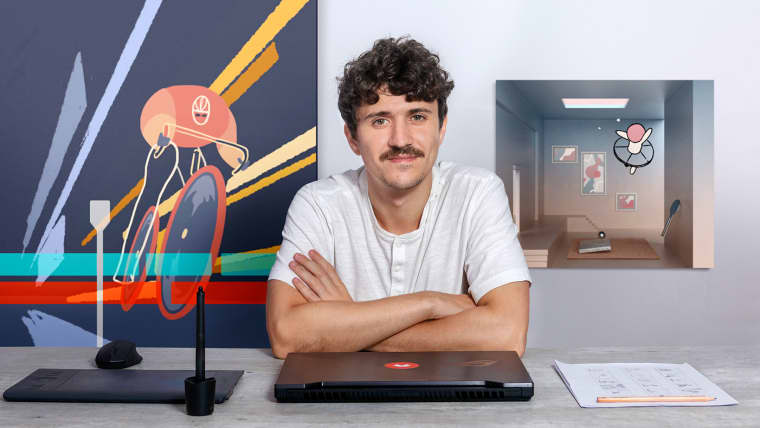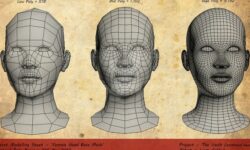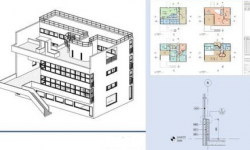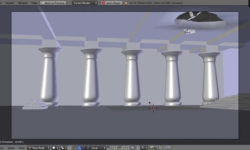Combined 2D illustration and 3D animation techniques – Técnicas combinadas de ilustración 2D y animación 3D (Spanish, Multisub)
Release date:2021
Author: Martiniano Garcia Cornejo
Skill level:Beginner
Language:English
Exercise files:Yes
Explore your limits and learn a new method to create animations
Combining different types of animation is a great way to overcome your creative limits and achieve outstanding results. Martiniano García is an Argentinean designer and animator with more than 10 years of experience in motion graphics. His studio Fú develops illustrations, and ads for brands such as Fila, Umbro, Fox, Premier League, Siemens, among others.
Martiniano excels in producing experimental pieces, exploring and combining a variety of original techniques to express his creative voice, and in this course, he teaches his entire workflow step by step.
Learn how to combine 2D illustration and 3D modeling into one animation, reviewing all the fundamentals of traditional animation until you achieve a unique piece where the two techniques merge together perfectly with one another.
Get to know Martiniano, how where he comes from has influenced his career, his professional trajectory as a designer and animator, and his main references that go from some anime classics to some of today’s animation professionals with an original style.
Explore new ideas by sketching (or microsketching, as Martiniano calls it) until you find one that works for you. Define the composition as well as your conceptual point of view as a guide, to achieve a solid animation by the end of the course.
Enter the 3D world and start modeling a magic room that changes according to the behavior of your character. Work the color, materials, and the animation until the render is done.
Next, step into the 2D universe. Review the traditional animation’s fundamental concepts and apply them to your work. Analyze the two types of animations that you can do and get to work on creating your piece frame-by-frame with ToonBoom.
Once you have created both animations (3D and 2D frame-by-frame) it’s time to unite them in Adobe After Effects and with Martiniano’s expert tips, achieving one perfect and unique animation, adding the final touches of your render.
To conclude the course, Martiniano shares with you the best way to share your work on social media.
What is this course’s project?
Create a 6-8 second video, combining 3D and 2D frame-by-frame techniques.
Who is it for?
Designers, illustrators, and artists—with some knowledge in animation—that want to create a unique animation by applying different techniques.
What you need
You will need to know how to use Toon Boom (or another traditional animation software), Cinema 4D, and Adobe After Effects. If you haven’t worked on these before, it’s recommended that you do the following Domestika Basics before starting this one: Introduction to Adobe After Effects and Introduction to Cinema 4D.
As for materials, you will need a computer that has the rendering capacity for After Effects, Toon Boom, and Cinema 4D (or other 3D design software to create frame-by-frame animations), and a graphics tablet.





 Channel
Channel






Please upload speed painting in photoshop : accelerate your creative process from domestika
I’d like to also make a polite request for Domestika’s Speed Painting in Photoshop: Accelerate Your Creative Process, as Ajay did.
Thanks very much if this can be possible.